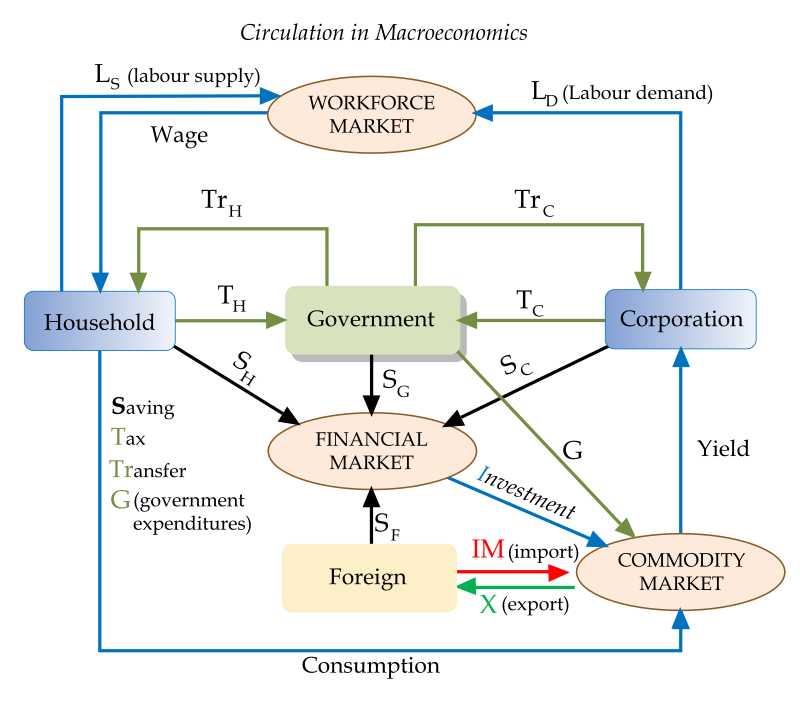Macroeconomics is a branch of economics that studies how an overall economy—the market or other systems that operate on a large scale—behaves.
The two main areas of macroeconomic research are long-term economic growth and shorter-term business cycles.
Macroeconomics in its modern form is often defined as starting with John Maynard Keynes and his theories about market behavior and governmental policies in the 1930s; several schools of thought have developed since.
Macroeconomics studies economy-wide phenomena such as inflation, price levels, rate of economic growth, national income, gross domestic product (GDP), and changes in unemployment.
Some of the key questions addressed by macroeconomics include: What causes unemployment? What causes inflation? What creates or stimulates economic growth? Macroeconomics attempts to measure how well an economy is performing, to understand what forces drive it, and to project how performance can improve.

Understanding Macroeconomics
There are two sides to the study of economics: macroeconomics and microeconomics. As the term implies, macroeconomics looks at the overall, big-picture scenario of the economy.
Put simply, it focuses on the way the economy performs as a whole and then analyzes how different sectors of the economy relate to one another to understand how the aggregate functions. This includes looking at variables like unemployment, GDP, and inflation.
Macroeconomists develop models explaining relationships between these factors. Such macroeconomic models, and the forecasts they produce, are used by government entities to aid in the construction and evaluation of economic, monetary, and fiscal policy; by businesses to set strategy in domestic and global markets; and by investors to predict and plan for movements in various asset classes.
Given the enormous scale of government budgets and the impact of economic policy on consumers and businesses, macroeconomics clearly concerns itself with significant issues.
Limits of Macroeconomics
It is also important to understand the limitations of economic theory. Theories are often created in a vacuum and lack certain real-world details like taxation, regulation, and transaction costs.
The real world is also decidedly complicated and includes matters of social preference and conscience that do not lend themselves to mathematical analysis.
Even with the limits of economic theory, the performance of companies, and by extension their stocks, is significantly influenced by the economic conditions in which the companies operate and the study of macroeconomic statistics can help an investor make better decisions and spot turning points.
Likewise, it can be invaluable to understand which theories are in favor and influencing a particular government administration.
Areas of Macroeconomic Research
Economic Growth
Economic growth refers to an increase in aggregate production in an economy. Macroeconomists try to understand the factors that either promote or retard economic growth in order to support economic policies that will support development, progress, and rising living standards.
Business Cycles
Superimposed over long term macroeconomic growth trends, the levels and rates-of-change of major macroeconomic variables such as employment and national output go through occasional fluctuations up or down, expansions and recessions, in a phenomenon known as the business cycle.

